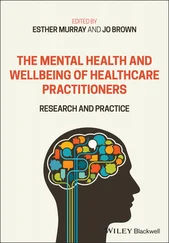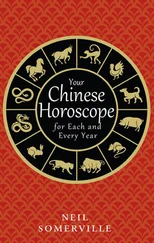| Yin |
Yang |
| Inward |
Outward |
| Smooth |
Rough |
| Holding |
Sending |
| Receiving |
Giving |
| Listening |
Speaking |
| Dark |
Light |
| Earth |
Sky |
| Soft |
Hard |
| No boundaries |
Clear boundaries |
ONE TRADITION SAYS that tai chi originated some 5,000 years ago during the reign of China’s mythical first emperor, Fu Hsi. Exercises for health are described in a collection of classic writings attributed to one of his successors, the legendary Yellow Emperor, Huang Ti, who is said to have founded the traditional Chinese system of medicine. The principles of the art were established by Taoist recluses who retired from the world to live as hermits. And it evolved during turbulent periods in China’s history as a martial art called t’ai chi ch’uan.
Although tai chi is thought to have originated before the first millennium, the earliest known references date from the T’ang Dynasty (618–960 C.E.). They describe “patterns” of tai chi practiced by recluses who had retired to China’s mountain regions.
The early tai chi teachers remain semi-mythical figures. Chang San-feng is no exception, a colorful figure, said to have been more than 6 feet tall and a powerful fighter. No one knows whether he really existed or when he lived. Yet, he is credited as the founder of a spiritual fighting art called Wudang kung fu.

Three founding fathers of Taoism, the ancient Chinese philosophy on which tai chi is based.
History records that Chang San-feng studied under a Taoist recluse living in the northwest of China, then studied martial arts at the Shaolin Temple Monastery near Zhengzhou in modern Henan.
It is said that in tai chi a process leads the player from body to mind to spirit, and eventually back to the Great Void to merge with the cosmos. Chang San-feng followed this path, which led him to further studies at the Purple Summit Temple on the Wudang Shan, a mountain held sacred by Taoists. Chang San-feng is said to have spent nine years there studying nature, and was struck by the martial potential of yielding while watching a fight between a snake and a bird. He modified his kung fu style, replacing many of the physical training methods with mind-focusing techniques such as visualization, and the cultivation of energy through qigung. From this point, China’s “soft” fighting arts – ba gua, hsingi, and t’ai chi ch’uan – developed.
As the peaceful and prosperous Ming Dynasty declined in the 1600s, to be replaced by conquerors from Manchuria, hand-to-hand battlefield combat was a frequent reality and personal combat skills were at a premium. Foremost among the soft, or internal, fighting styles was the Chen style of tai chi, founded by Chen Wang-t’ing, a soldier in the imperial Ming armies who served under a respected general, Ch’i Chiguang. Ch’i wrote the Classic of kung fu, setting out the principles of what became Chen style. However, it is also claimed that Chen studied under the author of the now-classic Treatise on T’ai Chi Ch’uan , Wang Tsung-yueh, whose lineage could be traced back to the legendary fighter Chang San-feng.
By the 1800s tai chi was at its zenith as a fighting art, and the Chen style was well established. However, it was still taught only to members of the Chen family. In the early 1800s a student from a poor family, Yang Lu-ch’an, worked in the household of the clan head, Chen Chang-xing. where he spied on tai chi sessions. One day he offered to fight a stranger who had challenged Chen Chang-xing. Yang fought so well that it was obvious that he had been secretly learning the Chen style. Chen accepted Yang as a student.
Yang Lu-ch’an traveled China as a Chen family representative, offering challenges to fighters, and was nicknamed “Ever-Victorious.” He is said to have been appointed to teach Chen-style t’ai chi ch’uan to the household of the Ch’ing Emperor. Chen style is dynamic and physically demanding. To adapt the style for courtiers who had not trained from early youth Yang omitted the more vigorous movements, creating a gentler form of tai chi. Today, while Chen is recognized as the oldest of the three main tai chi styles practiced today, a shorter version of Yang’s style is most widely taught.
An outstanding teacher who bridged the classic tai chi styles with 20th century development is Cheng Man-ching. In the 1930’s Cheng, a disciple of Yang Cheng Fu, condensed his teacher’s form of 108 moves down to a more managable 37. He opened a school in New York in the 1960’s and as a result was most instrumental in bringing tai chi to West. Another short version of the Yang style was created in 1949 by the Washu Council of China, known as the Peking 24 step.
The third style was developed by Yang’s student, Wu Yu-hsiang, who also studied with the Chen family, so his style incorporates features of both. These three styles have given rise to numerous derivatives.
TAI CHI SPREADS WORLDWIDE
During the 1800s t’ai chi ch’uan flourished and the classic schools were established. New warfare technology diminished tai chi’s role as a battlefield art so that the tai chi families no longer needed to keep their arts secret. Since 1900 tai chi has become accessible to ordinary Chinese people, and has spread westward, to North America, Australia and New Zealand, and into Europe.
TAI CHI IS best known in the West as a system of exercises to benefit health, prevent degenerative illnesses, and promote longevity. It stimulates circulation, aligns misplaced bones, mobilizes the joints, stimulates and maintains vital organs, and improves balance and coordination. It improves the breathing, which revitalizes body and brain. But tai chi is a holistic practice and it also trains the mind to focus and concentrate. It widens sensitivity and the capacity to feel, so that people who practice become more awake, alive, and responsive.
A few minutes of gentle massage can release tension and remove pain.
The following pages show many different ways in which tai chi can benefit health of body and mind. Tai chi works with the body to support and encourage its natural capacity for healing. Practicing the techniques correctly raises chi, or life energy, which strengthens the immune system and improves health, and jin or whole body energy, also called intrinsic energy, which improves coordination.
Tai chi movements build energy gradually. Tai chi movements generate warmth, often accompanied by a sense of fullness. After perhaps half an hour of practice the body may feel as if it is humming. After a training session this can be felt as heat energy in certain parts of the body, especially the hands, which seem to radiate heat.
HEALING OTHERS
Massage for tai chi can be reassuring, so offering to massage relatives or friends is a way of helping them through touch. Explore the following methods for yourself and discover how the healing energy generated in tai chi practice can help you, your friends, and family.
Foot-holding and intuitive foot massage
The simple technique of foot-holding embodies the principle of “not doing” perfectly. For the best effect the person to be massaged should lie down comfortably, or, if this is not possible, sit in a chair with the knees and legs supported on a stool or cushions. Rest your hands on the other person’s ankles or feet and do nothing for at least 10 minutes. Notice how energy builds in both bodies. This demonstrates the two-way nature of healing and the positive feedback that begins with tai chi practice. Intuitive foot massage is stimulating and comforting. Simply massage the other person’s feet in any way that occurs to you.
Читать дальше













